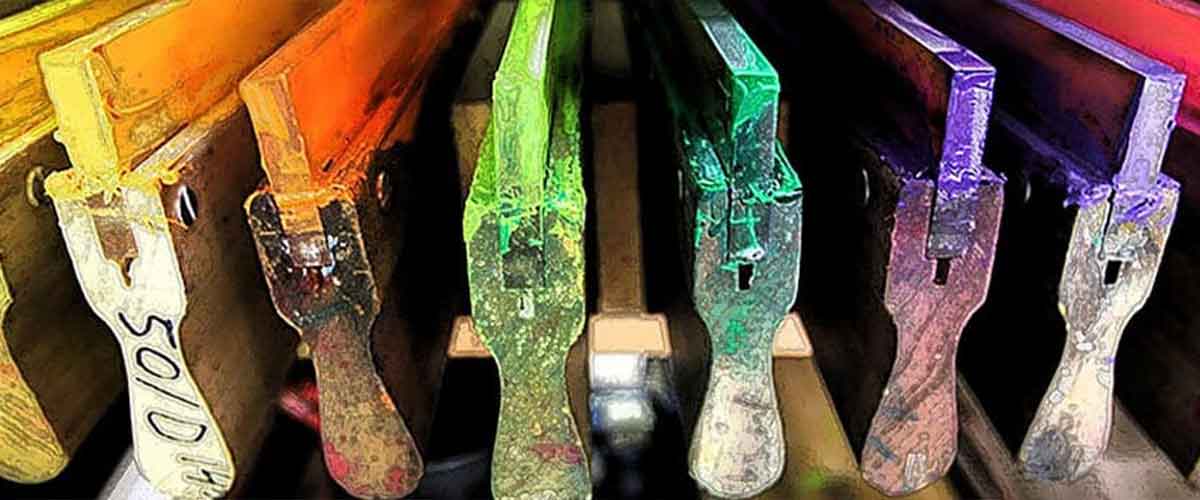-

Screen Printing on Blank T-shirts: Need to Know
Jun 3
Details1. What is Screen Printing?
Screen printing is a technique used to transfer ink through a stencil onto the material. Cotton, nylon or metal are popular choices, but blank t-shirts are more often used as you’re free to create a personalized fashion design.2. Background
A rubber squeegee is used to press your chosen printing ink through a screen. It will then print onto your blank t-shirts, but the outcome will solely depend on the type of ink and squeegee used. History tells us the process was initially developed in China and cultivated in Japan. 1915 was the year the practice took off, as photo-screen printing and photo stencils formed a breakthrough in commercial design, specifically in the United States. Screen printers with the technology were able to curate advertising signs for local shops and grocery stores. Traditional sign painters soon found they were struggling to land jobs, as those with screen printing technology were offering work at a more budget-friendly price. Initially, the art of screen printing was kept a trade secret, but it wasn’t long before the technique filtered down into the art world. Andy Warhol and Richard Hamilton are among the pop artists who utilized screen printing for modern art. Nowadays, DIY communities and organizations worldwide use screen printing as a medium to create, design and shape their art. From blank t-shirts, cushions, furniture and more, screen printing is a great way to customize your belongings. Screen printing requires 6 basic elements; a screen, the artwork, emulsion, a squeegee, ink and a water source. Getting hold of the materials is the easy and often cheap part, but it’s the process that needs perfecting.3. Under base
The first step to consider is the under base, which is essentially your primer coat. It’s a fundamental way to ensure your design and colors turn out the way they should. Blank t-shirts almost always require an under base. This is where neutral ink is used to print your whole design in order to form a base. It doesn’t matter what color the blank t-shirts you use are, as neutral ink will ensure bright colors remain consistent when printed over darker ones. However, you must take into account that due to the extra layer of ink used, under basing will make your material thicker to touch. It can also make printing more expensive, so only consider under basing when the blank t-shirts are dark and color consistency is a priority. If your blank t-shirts are light and you wish to retain a soft feel, you won’t need an under base.4. Ink types
The next step to take is choosing which ink to use. Plastisol ink is a conventional choice, as it produces a thick print on top of your blank t-shirts. It’s also high in contrast, so if you want your printed design to be vivid and colorful, plastisol ink is the best choice. Consider plastisol ink if you’re printing on blank t-shirts made of nylon, dark or sport fabric. If not, water-based inks offer a diluted, soft and eco-friendly effect. A water-based ink directly bleaches the fibers of your fabric, so your blank t-shirts remain soft, even after washing. However, water-based inks aren’t high in contrast, which can prove problematic if you want a strong design. On the other hand, they’re perfect if you’re looking to recreate a faded, vintage effect. Consider water-based inks if you have a limited color spectrum. If neither of those options are suitable, soft plastisol or soft-hand plastisol is another ink option to consider. They use thinning agents to give you the contrast of a plastisol ink at a softer rate. This, therefore, reduces the amount of ink that is transferred onto your blank t-shirts, to offer a happy medium between plastisol and water-based ink. For those looking to add a textured shimmer to their blank t-shirts, foil printing offers just that. It’s extra-sensitive, however, so ensure you complete the two-part process with care. First, print an adhesive layer onto your blank t-shirts and once cured, heat-press the foil on top. Unfortunately, foil printing isn’t that durable, as multiple washes can cause the foil to flake off. With that in mind, make sure to abide by strict washing instructions to encourage longevity. Wash in cold water, wash inside out and don’t ever iron the print. Another textured alternative is puff ink. Doing exactly as it says on the tin, puff ink mixes plastisol ink with an additive to trigger the “puff” process. This occurs after the ink has dried on top of your blank t-shirts, producing a textural or faux stitch effect. A final option is crystalina, a plastisol ink that contains small glitter flakes. If you’re looking for something a little more sparkly and a lot less metallic than just foil, crystalina is the ideal ink to transfer onto your blank t-shirts. That’s a brief need to know about screen printing on blank t-shirts. Whether you’re a screen-printing novice or an inking expert, there are multiple ink choices available to give you the desired effect.





